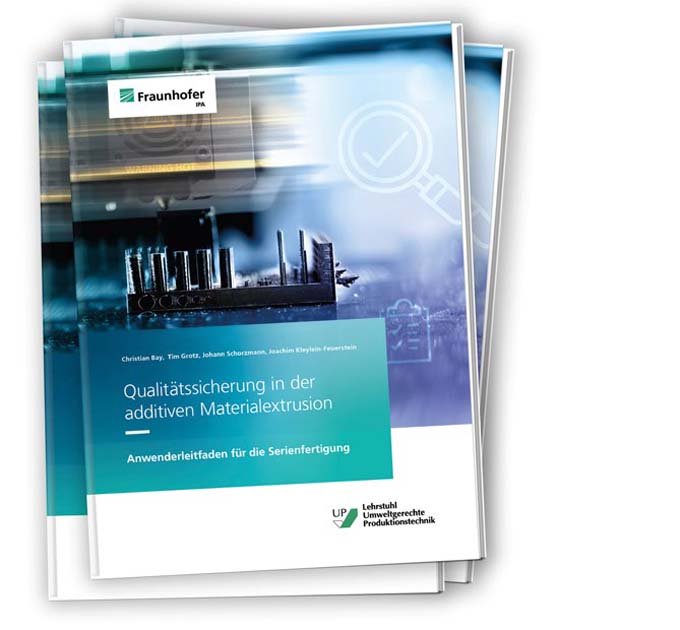Guide: "Quality assurance in additive material extrusion".
Additive material extrusion cannot yet exploit its full potential in industry. The reasons lie, on the one hand, in quality assurance. Its standards are not established or are only partially adaptable. For another, there is no uniform regulation of which quality characteristics have the greatest influence on component quality and which test methods are suitable for measuring them. A new guide provides a remedy.

Material extrusion, or MEX for short, is the most widely used additive manufacturing or 3D printing process. In MEX, a heated plastic is conveyed through a nozzle and deposited in layers. The energy introduced into the plastic by the heating is sufficient for it to fuse with the underlying layer after deposition. Once the plastic has cooled, a permanent bond is formed. Although companies are increasingly focusing on the industrialization of this process, the lack of standardized quality assurance in the additive process chain is inhibiting industrial application and scaling. This means that process-specific standards and guidelines can only be adapted to a limited extent from other manufacturing processes for additive manufacturing and are thus not established. This leads to quality standards for materials, processes and components of additive material extrusion that are not uniform and comparable across companies. Furthermore, there is no uniform understanding of which quality characteristics have the greatest influence on component quality and which test methods are suitable for measuring it.
Practical recommendations for action for quality assurance
In order to overcome these obstacles, the Fraunhofer Institute for Manufacturing Engineering and Automation IPA and the Chair of Environmental Production Engineering at the University of Bayreuth have written the user guide "Quality Assurance in Additive Material Extrusion". This compiles essential recommendations for action for the qualitative and quantitative determination of the quality of an additively manufactured component, which can be of importance in the planning, production and control in the additive process chain. In addition, the authors of the guide describe which subprocesses along the process chain have a relevant influence on component quality and reproducibility. These sub-processes form the basis for a universally applicable process model for the assessment of component quality, which, in addition to the recording of component quality, also includes the quality assurance process.
Guide already tested
To ensure the comparability of components, the experts have developed a quality class system that enables the objective quantification of component quality. Existing standards and guidelines for additive manufacturing that are suitable for MEX are used for this purpose. The core of the procedure model is the evaluation of suitable quality characteristics and their test procedures using suitable test specimens and reference components, as well as their quantitative and qualitative assessment by means of a quality matrix. The focus is on the quality characteristics of tensile strength, surface condition and dimensional stability. This process-related approach is a prerequisite, particularly in safety-relevant areas such as the aerospace industry, medical technology or vehicle construction, for obtaining certification and thus manufacturing orders. The application of the guide has been practically tested at a manufacturing service provider, a material manufacturer and a research institution and thus offers a low-threshold approach to quality assurance for additive material extrusion.
Further information:
3dqguide.production-better-make.com
www.produktion-besser-machen.de
www.prozessinnovation.fraunhofer.de









